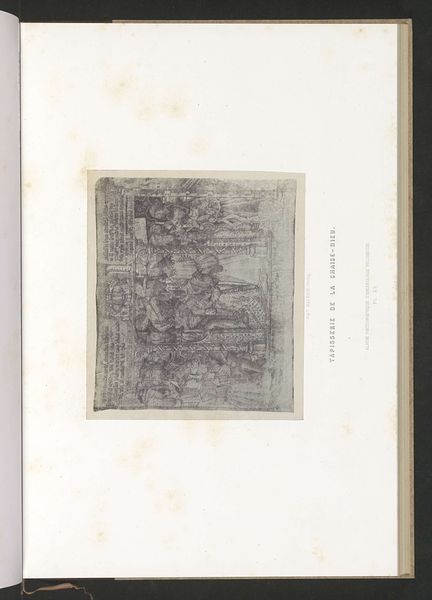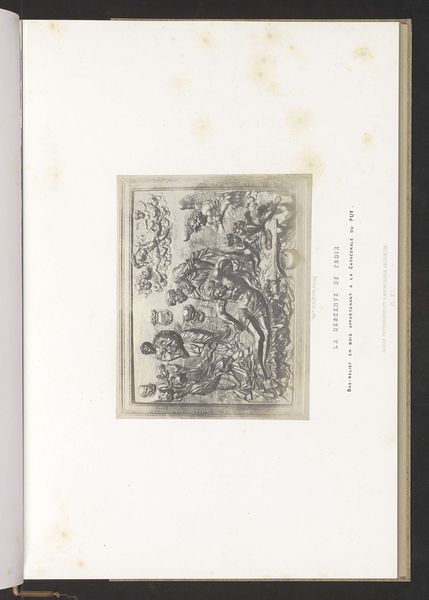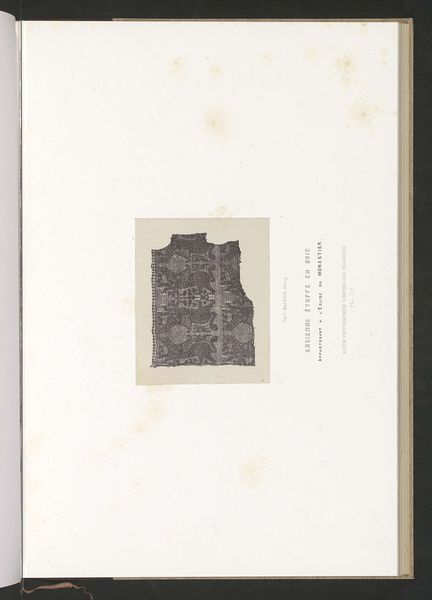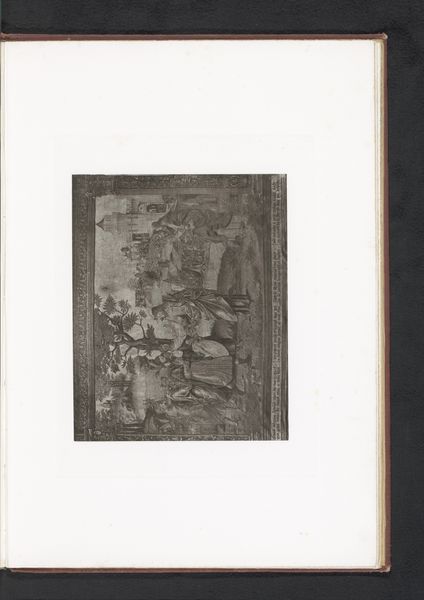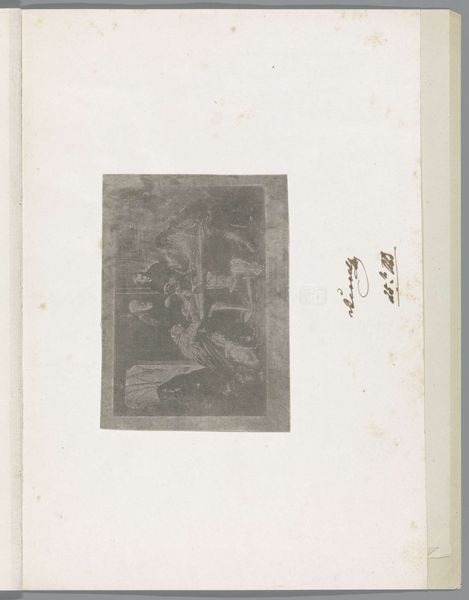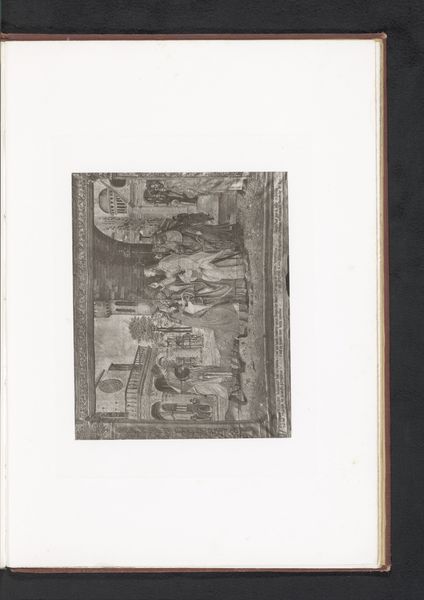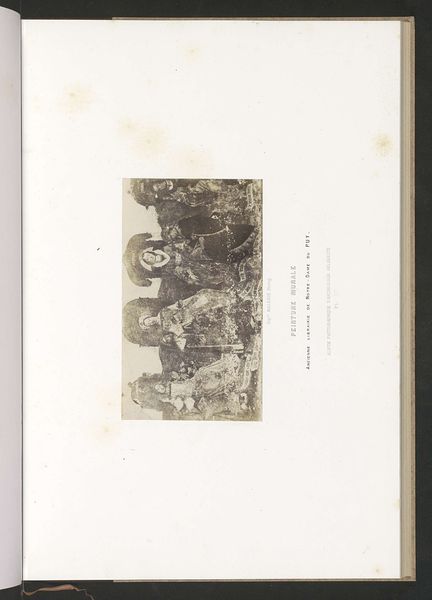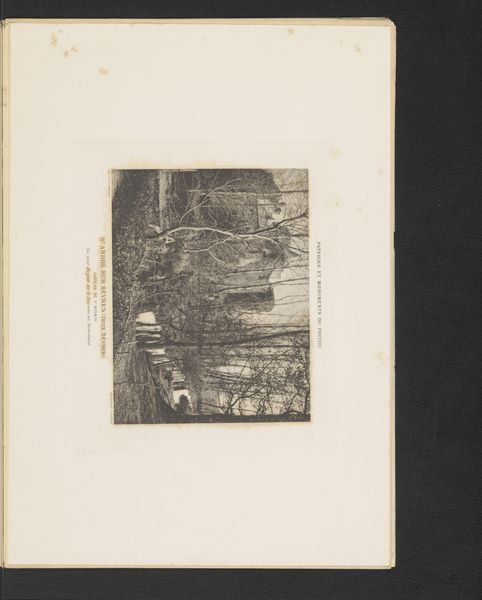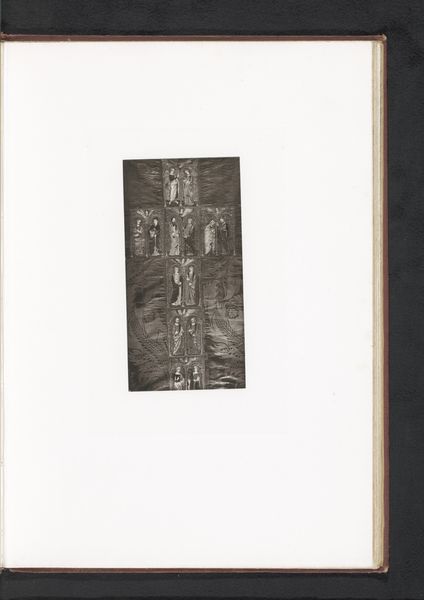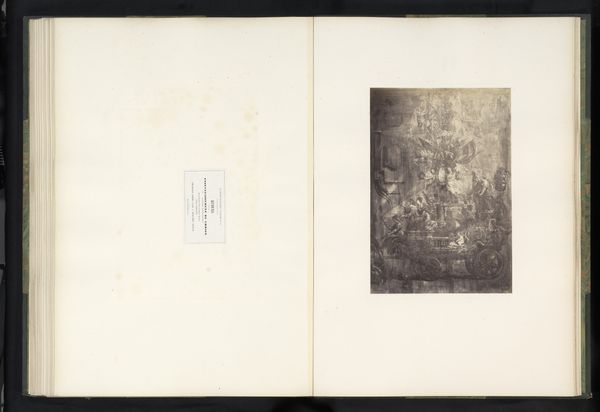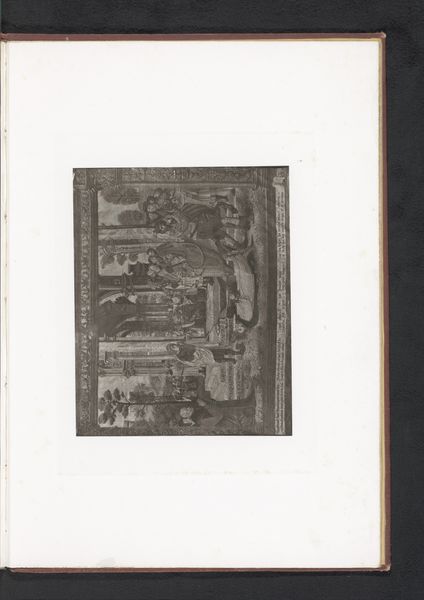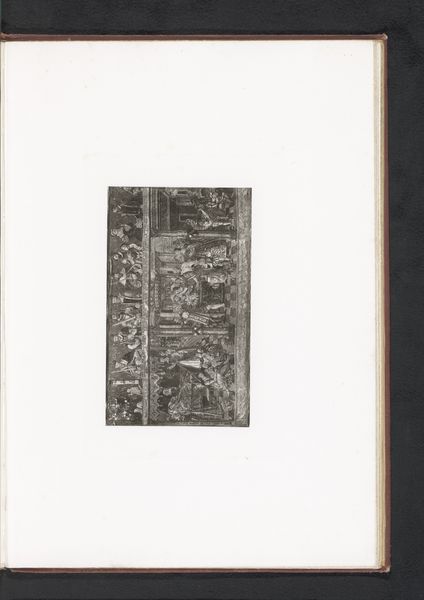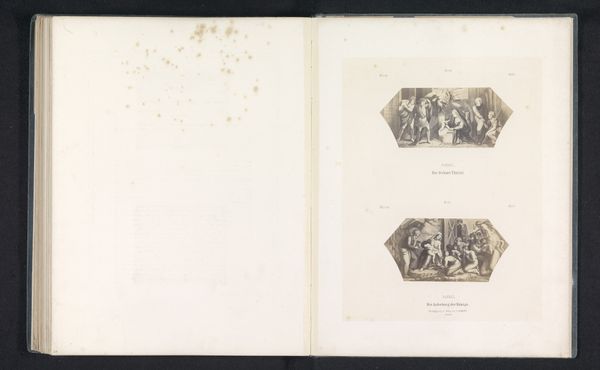
print, engraving
#
medieval
#
narrative-art
# print
#
history-painting
#
academic-art
#
engraving
Dimensions: height 173 mm, width 221 mm
Copyright: Rijks Museum: Open Domain
Curator: Looking at this piece, "Wandtapijt afkomstig van La Chaise-Dieu," or "Tapestry from La Chaise-Dieu," a print created before 1857 by Hippolyte Malé gue, what strikes you immediately? Editor: A sense of formidable history. There’s a weightiness evoked by the imagery itself, almost as though I am gazing into the mists of time itself. I imagine it would evoke similar emotions within the 19th century viewer when this piece was rendered as a print. Curator: Absolutely. This engraving serves as a document, preserving the iconography embedded in the original tapestry. The piece suggests larger societal narratives present in the tapestry from La Chaise-Dieu in France. There are visual markers hinting towards academic art and medieval themes, but through its printed dissemination, its role is complicated. Editor: Observe the symbolism interwoven here; the composition suggests elements borrowed from an era where image equaled power. Considering the print format, how might this have broadened accessibility and influence the cultural interpretation and appreciation of historical events portrayed within it? Curator: In disseminating medieval narratives through reproductive prints, Malé gue contributed to shaping 19th-century national identity and historical consciousness. The aesthetic style could have amplified particular emotional responses. What we're seeing isn't merely a reflection of medieval aesthetics, but a pointed engagement with the past in service of present ideological concerns. Editor: This resonates with my sense of history as cultural memory being reshaped and reimagined, continually reinforcing cycles that define contemporary existence and societal narratives. Seeing history painting as a narrative to influence memory is intriguing. Curator: And with a focus on tapestry, the medium and texture carry social and political significance. As a tapestry originally, what type of people had access? As an affordable engraving, who then had access? Editor: Right, in both mediums, the symbolic imagery may have had a completely different purpose and impact based on the class and status of those experiencing the art. It invites contemplation on our ever-changing interpretation based on societal status and political affiliation. Curator: Thinking about "Wandtapijt afkomstig van La Chaise-Dieu," what we gain here goes beyond a mere replication of an image—rather, we understand art's lasting impression as historical storytelling. Editor: Precisely; symbols serve as potent links connecting present with the historical, offering context and continuous cycles across time.
Comments
No comments
Be the first to comment and join the conversation on the ultimate creative platform.
